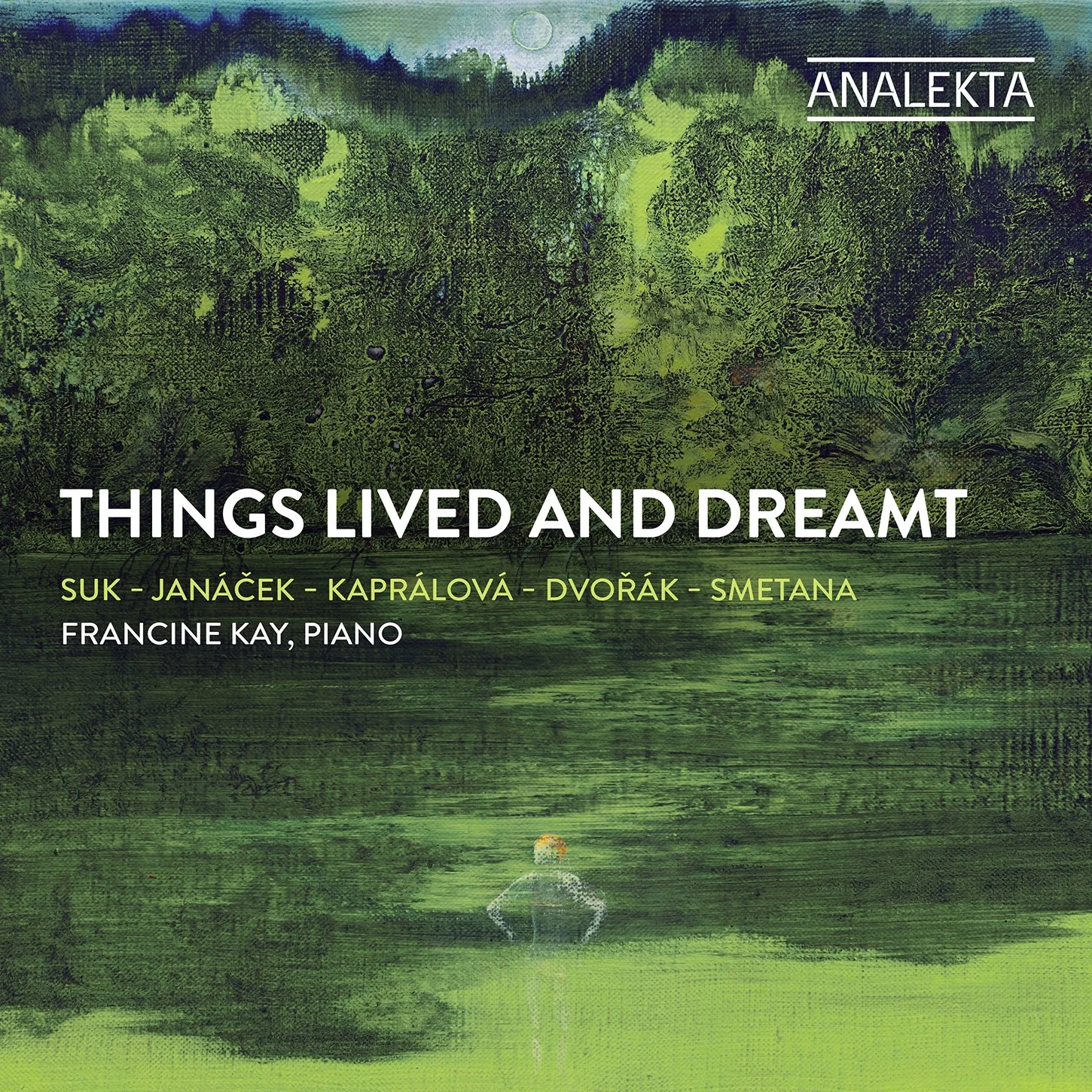Violinist Solomiya Ivakhiv releases “Ukrainian Masters: Sonatas for Violin and Piano by Bortkiewicz, Kosenko and Skoryk”
Album features sonatas spanning the 20th century with pianist Steven Beck
Featuring a world premiere recording; released February 23 on Naxos
“a fabulous tone and virtuoso panache that feels just right.” — Gapplegate Classical
The Ukrainian-American violinist Solomiya Ivakhiv has made it her mission to share the music of her home country. Her latest release, “Ukrainian Masters” (Naxos 8.579146, rel. February 23, 2024) includes violin sonatas spanning 1922 to 1991 by three seminal Ukrainian composers, including a world premiere recording of Viktor Kosenko's Sonata in A minor, Op. 18. Ivakhiv is joined by the renowned pianist Steven Beck who frequently performs with the New York Philharmonic.
Each of the three composers on the new album are major figures in Ukrainian classical music and in Ivakhiv's own musical life. "I knew Kosenko's piano music growing up, but it was not popular to play Ukrainian music, as the Soviet government only promoted Russian composers. Therefore his music was not professionally recorded. I discovered the sonata after I moved to the U.S. when I was studying at Curtis and planning my recitals."
Bortkiewicz's music on the other hand was completely banned in the Soviet Union as he was a refugee and fled Ukraine via Istanbul, Belgrade, Sofia, Serbia and Vienna when Russians occupied Eastern Ukraine. "He was declared an enemy of the people as a result, and I only discovered his music with the war in Ukraine," continues the violinist. "Skoryk I did know personally, and had the opportunity to play his music for him before he passed away in 2020."
In addition to Ukrainian Masters, Ivakhiv has highlighted works from Ukrainian composers on her recordings Poems and Rhapsodies with the National Symphony of Ukraine (Centaur, 2022) and Ukraine - Journey to Freedom (NAXOS, 2016). Other album releases include Haydn + Hummel Concertos (Centaur, 2020) and Mendelssohn Concertos (Brilliant Classics, 2019).
Contact ClassicalCommunications@gmail.com to request a physical CD or digital copy of Ukrainian Masters.
February 9: Album release performance and panel discussion in NYC
To celebrate the release of Ukrainian Masters, Ivakhiv and Beck will perform selections from the album at the Ukrainian Institute of America in NYC on February 9 at 7 pm. The evening will feature a conversation on "Ukrainian Composers and their Words" with Maria Sonevytsky, Professor of Music, Bard College and Peter Schmelz, Professor of Music, Johns Hopkins University. Admission includes a copy of the CD. Ticket information coming soon.
"There is absolutely no stuffiness about this playing, just a constant outpouring of joy.”
– Classical Candor
Ukrainian Masters: Sonatas for Violin and Piano by Bortkiewicz, Kosenko and Skoryk
Solomiya Ivakhiv, violin
Steven Beck, piano
Naxos 8.579146
Release date: February 23, 2024
TRACKS
Viktor Kosenko: Violin Sonata in A minor, Op. 18 (1927)* 17:42
[01] I. Allegro 9:24
[02] II. Andantino semplice 8:06
Myroslav Skoryk: Violin Sonata No. 2 (1991) 14:58
[03] I. The Word: Moderato con moto 5:15
[04] II. Aria: Andante con moto 5:56
[05] III. Burlesque: Vivo 3:40
Sergei Bortkiewicz: Violin Sonata in G minor, Op. 26 (1922) 25:21
[06] I. Sostenuto – Allegro drammatico 10:22
[07] II. Andante 7:24
[08] III. Allegro vivace e con brio 7:30
*world premiere recording
Ukrainian born violinist Solomiya Ivakhiv is a highly celebrated soloist, chamber musician and educator. She has made solo appearances with the Istanbul State Symphony Orchestra, National Symphony Orchestra of Ukraine, Lviv National Philharmonic of Ukraine, Charleston Symphony in the United States and Hunan Symphony Orchestra in China, and has performed at chamber music festivals worldwide, including Tanglewood, Newport, Nevada Chamber Music Festival and KyivFest. Her recordings have been featured on NPR’s Performance Today and have placed in the top charts on iTunes and Spotify.
Since 2010, Dr Ivakhiv has served as artistic director of the Music at the Institute (MATI) Concert Series in New York City, where her primary focus is to introduce audiences to Ukrainian classical music. She is also artistic director of the Caspian Monday Music Festival in Greensboro, Vermont. She holds degrees from the Curtis Institute of Music and Stony Brook University, and is associate professor of violin and viola and head of strings at the University of Connecticut. In 2021, she was named Honoured (Merited) Artist of Ukraine, her native country’s highest cultural honour.
A graduate of The Juilliard School, pianist Steven Beck made his concerto debut with the National Symphony Orchestra. His annual Christmas Eve performance of Bach’s Goldberg Variations at Bargemusic has become a New York institution. As an orchestral musician he has appeared with the New York Philharmonic and Orpheus Chamber Orchestra. Beck is an experienced performer of new music, having worked with Elliott Carter, Pierre Boulez, Henri Dutilleux, Charles Wuorinen, George Crumb, George Perle and Fred Lerdahl. He is a member of The Knights, the Talea Ensemble, Quattro Mani and the Da Capo Chamber Players. His discography includes George Walker’s piano sonatas for Bridge Records, and Elliott Carter’s Double Concerto on Albany Records. He is a Steinway Artist, and is on the faculty of the University of Massachusetts, Amherst.





